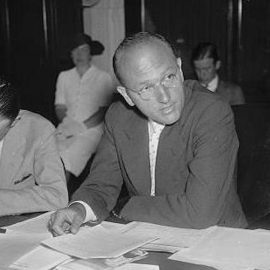
Do you want to learn how to build an effective team? What are some strategies you can use?
To build an effective team, consider grouping people according to one responsibility. Looking at how single-responsibility teams are built can give you insight into how to make a team effective.
See how single-responsibility teams work and how the idea can help you make a strong team.
Benefits of Building Single-Responsibility Teams
When learning how to build an effective team, you should consider building what are called single-responsibility teams (also known as “the single-threaded leader model”).
What are single-responsibility teams? Generally, these teams only work on a single mission; for instance, to expand the business into foreign markets, or to operate and improve a customer service hotline. Each single-responsibility team has a single-responsibility leader whose only job is to lead the team to accomplish its mission. This narrow focus ensures that every team accomplishes what it sets out to do.
In contrast, traditional companies typically assign many responsibilities to each team and each employee. If a new project comes up, managers often end up adding it to someone’s to-do list rather than hiring someone new or assigning someone to concentrate on it full-time. Consequently, many workers divide their attention among a wide range of projects, leaving many projects under-prioritized and ultimately unfinished.
| How Do Single-Responsibility Teams Implement the Guiding Principles at Amazon? One of Amazon’s guiding principles is “Ownership,” which states that leaders should take responsibility for every success or failure in the entire company. Single-responsibility teams help their employees take ownership, but they seem to be using the word to mean the opposite of the guiding principle: Single-responsibility teams help employees take narrow ownership of the projects that are exclusively theirs, rather than broad ownership of every success in the company that the guiding principle promotes. Amazon’s guiding principle of ownership instructs employees to never say “That’s not my job,” but the whole point of single-responsibility teams is to designate the many things that aren’t an Amazon employee’s job. |
Single-Responsibility Teams Eliminate Dependencies
Another reason single-responsibility teams are so effective is that they’re designed to minimize dependencies, which cause inefficiency. Dependencies are areas in which a team lacks the resources to solve a problem they’re responsible for and must depend on another team to resolve the issue for them.
If there’s a dependency impeding a single-responsibility team from doing their only job, they work to resolve that dependency rather than work around it. Eventually, every team will resolve all their dependencies, empowering them to accomplish their mission without any outside input. Although resolving dependencies this way takes some time and money, the company empowers teams to do this because it results in a massive increase in efficiency: Fully autonomous teams no longer need to coordinate with other parts of the company (a task that takes a significant amount of time and effort).
For example, imagine a single-responsibility marketing team is trying to expand the business into a foreign country. Initially, they rely on the company’s only translator, who works on the web development team, to review and translate all their marketing copy. This is a dependency, and the marketing team wastes a lot of time waiting for the translator to get back to them. The marketing team realizes it’s their responsibility to resolve this dependency, so they hire a new team member from the country they’re expanding into to help them write their marketing copy. This allows them to roll out their marketing campaign much more quickly.
| Dependencies Obstruct Flow at Work In The Unicorn Project, Gene Kim asserts (through a business-centered fable) that dependencies between teams are particularly damaging to an organization because they prevent workers from entering the flow state. The flow state (as defined by psychologist Mihaly Csikszentmihalyi in Flow) is the state of total immersion in a challenging task. When workers are “in flow,” they feel more confident and capable of doing their job well. Being in flow is also an intrinsically enjoyable experience, so they’ll feel motivated to work more. This increase in confidence and motivation will help any team to be even more productive and efficient. Dependencies prevent workers from entering flow by depriving them of the power to get their work done autonomously. When workers hit a dependency, they’re forced to do the bureaucratic work of coordinating with other teams. Then, they have to wait around, feeling useless, while the other team handles the problem for them. Both of these tasks are unconducive to the flow state. In contrast, the act of independently resolving dependencies is arguably conducive to the flow state. To enter the flow state, you must feel like you’re successfully progressing toward your goals. When a team is permanently resolving a dependency, they know that in doing so, they’re making the rest of their work easier for the entire foreseeable future—an attractive goal that no doubt feels satisfying to achieve. This is another reason that empowering teams to resolve dependencies is a wise investment for any company. |
Contrasting Single-Responsibility Teams With Single-Function Teams
In High Output Management, Andrew Grove refers to an Amazon-style single-responsibility organization as following a “Mission-Oriented” structure: Each team has a single mission and is responsible for doing everything they need to accomplish it. Grove contrasts this kind of organization with a “Functional” structure, in which each team is only responsible for performing a single function in the service of various missions across the organization. For example, a Functionally structured organization would have an IT department that services computers throughout the company, while a Mission-Oriented organization would have an IT professional on each team working only on that team’s mission.
According to Grove, the Functional structure comes with a number of advantages. For one, it’s more economical—paying a single IT department is typically cheaper than paying IT professionals across the entire organization, as all the teams can share a smaller group of workers. Grove contends that Functional structures are also better than Mission-Oriented structures at focusing and completing individual tasks since teams can concentrate on their sole function instead of worrying about other bureaucratic tasks—for instance, an IT department doesn’t have to spend time answering customer service complaints.
However, Grove notes that the Mission-Oriented structure comes with advantages as well—for one, Mission-Oriented teams are flexible and can resolve sudden problems much more quickly because they’re in charge of all the resources they need to do their job. Thus, Grove argues that the most successful companies are those that find ways to combine Mission-Oriented and Functional structures in their organization.
One way in which Grove recommends companies do so is through dual reporting—where one employee reports to two managers who are each responsible for different parts of the employee’s job.
For example, an IT professional might report to a technical manager responsible for the quality of their computer-related work across the company as well as a project manager responsible for one of the specific projects the IT professional is working on. Although the IT professional has more than one responsibility (keeping them from being totally mission-oriented), they report to various single-responsibility leaders whose job is to ensure that each project gets done.






